Related Research Articles
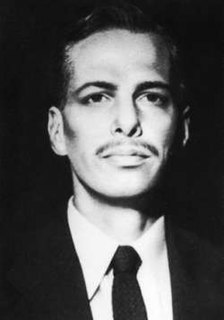
Hannes Bok, pseudonym for Wayne Francis Woodard, was an American artist and illustrator, as well as an amateur astrologer and writer of fantasy fiction and poetry. He painted nearly 150 covers for various science fiction, fantasy, and detective fiction magazines, as well as contributing hundreds of black and white interior illustrations. Bok's work graced the pages of calendars and early fanzines, as well as dust jackets from specialty book publishers like Arkham House, Llewellyn, Shasta Publishers, and Fantasy Press. His paintings achieved a luminous quality through the use of an arduous glazing process, which was learned from his mentor, Maxfield Parrish. Bok shared one of the inaugural 1953 Hugo Awards for science fiction achievement.
Computer magazines are about computers and related subjects, such as networking and the Internet. Most computer magazines offer advice, some offer programming tutorials, reviews of the latest technologies, and advertisements.

Yoshitaka Amano is a Japanese visual artist, character designer, illustrator, a scenic designer for theatre and film, and a costume designer. He first came into prominence in the late 1960s working on the anime adaptation of Speed Racer. Amano later became the creator of iconic and influential characters such as Gatchaman, Tekkaman, Honeybee Hutch, and Casshern. In 1982 he went independent and became a freelance artist, finding success as an illustrator for numerous authors, and worked on best-selling novel series, such as The Guin Saga and Vampire Hunter D. He is also known for his commissioned illustrations for the popular video game franchise Final Fantasy.

John Rea Neill was a magazine and children's book illustrator primarily known for illustrating more than forty stories set in the Land of Oz, including L. Frank Baum's, Ruth Plumly Thompson's, and three of his own. His pen-and-ink drawings have become identified almost exclusively with the Oz series. He did a great deal of magazine and newspaper illustration work which is not as well known today.
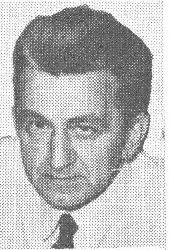
Frank Rudolph Paul was an American illustrator of pulp magazines in the science fiction field.

Alexander Gillespie Raymond Jr. was an American cartoonist who was best known for creating the Flash Gordon comic strip for King Features Syndicate in 1934. The strip was subsequently adapted into many other media, from three Universal movie serials to a 1950s television series and a 1980 feature film.
Richard M. Powers was an American science fiction and fantasy fiction illustrator. He was inducted into the Science Fiction Hall of Fame in 2008 and the Society of Illustrators Hall of Fame in 2016.
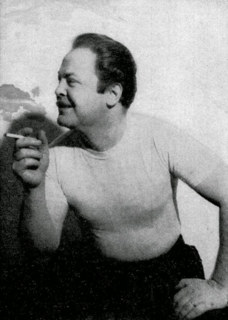
Virgil Finlay was an American pulp fantasy, science fiction and horror illustrator. He has been called "part of the pulp magazine history ... one of the foremost contributors of original and imaginative art work for the most memorable science fiction and fantasy publications of our time." While he worked in a range of media, from gouache to oils, Finlay specialized in, and became famous for, detailed pen-and-ink drawings accomplished with abundant stippling, cross-hatching, and scratchboard techniques. Despite the very labor-intensive and time-consuming nature of his specialty, Finlay created more than 2600 works of graphic art in his 35-year career.

Barbara Nessim is an American artist, illustrator, and educator.
Alan E. Cober, born in New York City was an American illustrator. His artwork appeared in The New York Times, Life, Time and numerous other publications. Cober was inducted into the Illustration Hall of Fame in 2011, thirteen years after his death in 1998. Cober was frequently cited as one of the most innovative illustrators America has ever produced.

Christos "Chris" Achilléos was a Cypriot-born British painter and illustrator who specialised in fantasy artwork and glamour illustration.
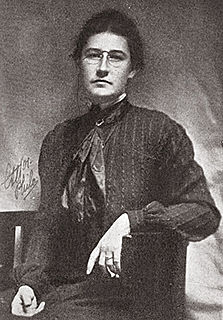
Jessie Willcox Smith was an American illustrator during the Golden Age of American illustration. She was considered "one of the greatest pure illustrators". A contributor to books and magazines during the late 19th and early 20th centuries, Smith illustrated stories and articles for clients such as Century, Collier's, Leslie's Weekly, Harper's, McClure's, Scribners, and the Ladies' Home Journal. She had an ongoing relationship with Good Housekeeping, which included a long-running Mother Goose series of illustrations and also the creation of all of the Good Housekeeping covers from December 1917 to 1933. Among the more than 60 books that Smith illustrated were Louisa May Alcott's Little Women and An Old-Fashioned Girl, Henry Wadsworth Longfellow's Evangeline, and Robert Louis Stevenson's A Child's Garden of Verses.
John Alan Maxwell was an American artist known primarily for his book and magazine illustrations, as well as historical paintings. He also was an illustrator for many commercial publications, including Collier's Weekly, The Saturday Evening Post, The Golden Book Magazine, The American Magazine, and Woman's Home Companion.

Robert Edward McGinnis is an American artist and illustrator. McGinnis is known for his illustrations of more than 1,200 paperback book covers, and over 40 movie posters, including Breakfast at Tiffany's, Barbarella, and several James Bond and Matt Helm films.
Walter Haskell Hinton was a painter and illustrator. He attended the Art Institute of Chicago 1901-1904, and he lived most of his life in the Chicago area, but spent some time in New York City, and Philadelphia.
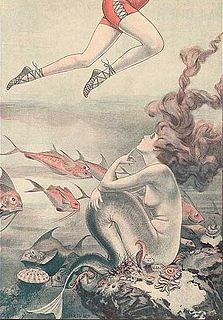
Chéri Hérouard (1881–1961) was a French illustrator who was most famously known for his forty-five-year work for French society magazine, La Vie Parisienne. Born as Chéri-Louis-Marie-Aime Haumé in Rocroi on 6 January 1881, Hérouard's father died in a hunting accident just before his birth. His mother remarried to a Hérouard, who was a descendant of the doctor of Louis XIII, and Chéri took the new name. Hérouard married Henriette Tabillon on 17 August 1903. Chéri Herouard's first printed artwork appeared in Le Journal de la Jeunesse in 1902. Upon stepping into the Publishing House of Calmann-Lévy, he met Anatole France, who encouraged him to continue his work.
Mark Zug is an artist and illustrator who is known for his work with the Septimus Heap series and Harlan Ellison's adaption of I, Robot. He has illustrated many collectible card games, including Magic: The Gathering and Dune, as well as books and magazines. He lives in Pennsylvania.

Frank Leslie's Illustrated Newspaper, later renamed Leslie's Weekly, was an American illustrated literary and news magazine founded in 1855 and published until 1922. It was one of several magazines started by publisher and illustrator Frank Leslie.

Byte was a microcomputer magazine, influential in the late 1970s and throughout the 1980s because of its wide-ranging editorial coverage.

William F. Rose was an American illustrator and film poster artist active in the 1930s and 1940s. He is recognized as one of the most distinctive poster artists of the Classical Hollywood era, a time when most film posters featured painted illustrations rather than photography. Rose painted dozens of poster illustrations for RKO Radio Pictures and other studios. As one of the leading designers in RKO's art department, he helped to define the studio's bold visual aesthetic. Although he was prolific, only a fraction of his poster designs have been individually attributed to him. Most of his output remains unidentified. His artwork is prized by collectors, and original prints of his posters have fetched high prices at auction.
References
- ↑ "First take first take first". Artforum International . 1 January 2002. Retrieved 19 March 2011.
When illustrator Robert Tinney was asked to draw a cover for a 1981 issue of Byte magazine dedicated to Smalltalk, he used the image of a colorful balloon ...
- ↑ Ranade, Jay; Nash, Alan (1994). The best of BYTE. McGraw-Hill. p. 42. ISBN 978-0-07-051344-0 . Retrieved 19 March 2011.
- ↑ Petersen, Julie K. (2003). Fiber optics illustrated dictionary. CRC Press. p. 145. ISBN 978-0-8493-1349-3 . Retrieved 19 March 2011.
- ↑ "When you think Byte, you think Tinney". The Advocate (Louisiana) . 2 August 1987. Retrieved 19 March 2011.
- ↑ "About The Artist". Robert Tinney Graphics. Archived from the original on 1 March 2014.
- ↑ "Carl Helmers - Computing Pioneers". Computing Pioneers. Retrieved 20 November 2022.